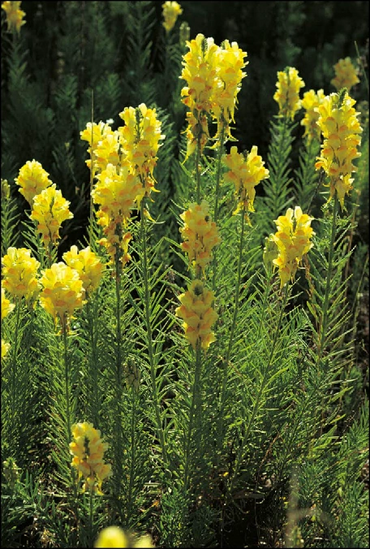Yellow Toadflax






Details and Information
Common Names
Wild snapdragon, common toadflax, ramsted, flaxweed, Jacob’s ladder, Butter and eggs
Description
Yellow toadflax is a perennial plant that was introduced into North America as an ornamental. Yellow toadflax only grows to a height of one to two feet and the plants have multiple stems. The seedlings resemble Leafy spurge at a young stage, but do not produce a milky sap when broken. Leaves are numerous, pale green to gray-green in color, narrow and pointed at both ends and have smooth margins and they alternately arranged on the stem. Flowers are pale to bright yellow with orange throats and a downward pointing yellow spur that can be an inch long. Flowers bloom from June to July. The seeds are winged, brown, oval capsules with two chambers and each plant can produce up to 30,000 seeds annually. Yellow toadflax has an extensive horizontal root system and can reproduce through the creeping roots or by seeds.
Key Features
Bright yellow and orange snapdragon type flowers; patches grow due to the extensive root system that connects the plants.
Habitat
Yellow toadflax prefers sites that have well-drained sandy or gravelly soils. This plant can be found in a variety of areas including rangeland, pastures, forests, right-of-ways, cultivated fields, gardens and gravel pits.
Control
There are herbicides and other control methods that commonly control yellow toadflax. Tordon or Telar are known to be the most effective. Milestone, 2,4-D, and Escort may also provide some control. For more information on these herbicides and other control methods contact the Weed and Pest office.
There are biological control insects that are being implemented for management of yellow toadflax, but success levels have not been well documented.
Other Facts
Yellow toadflax has been used for medical purposes with digestive and urinary tract disorders and used topically as an anti-inflammatory, diuretic, and to treat skin rashes.
Cookie Policy
This website uses cookies. By continuing to use this site, you accept our use of cookies.